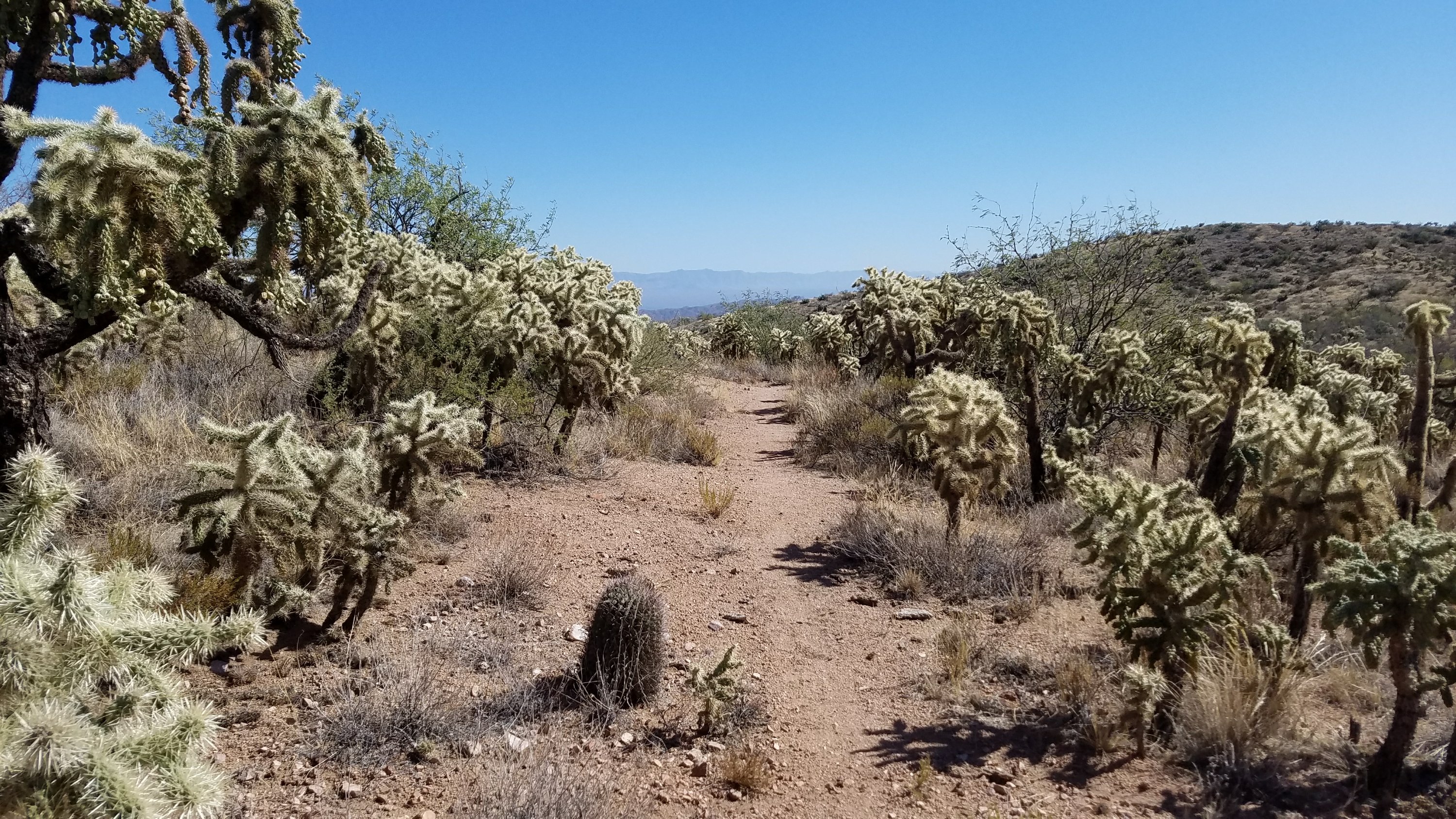October 29th, 2019
Mm 540.1 to mm 572.8
Distance in miles: 32.7
0600-1740
Voices rang out in the darkness. I woke instantly and saw 2 headlights bobbing along the trail. I checked the time…it was 2:30 am. With perfect clarity, I realized this must be the trail runner that was going for the women’s supported FKT—fastest known time on the AZT. A friend was running with her and they glided past me, not knowing I was camped there. My tent was especially hidden, in the small wash and camouflaged. It’s funny that at such an hour, in my foggy state, the scenario didn’t even strike me as unusual. This was precisely why I never pitched my tent on the trail. I expect people and vehicles can and will come by at all hours.
The coyotes started singing very close right afterwards. I wondered if they were laughing about the crazy things they see people doing. I quickly went back to sleep. I came to a trailhead and water cache late in the morning, where I met several of the crew supporting Helen, the trail runner. She got off trail to sleep right after she passed me and I ended ahead of her again. She was trying to match the current unsupported FKT, which was just under 16 days. To do so, she needed to average about 50 miles a day. It’s hard to imagine how someone did it that fast being unsupported. That means he was like me, having to carry all his gear, food and water and go into towns to get resupplies. That’s a lot of walking in the dark, too. The whole thing was very unappealing to me.
I continued on and the day was a bit monotonous. Rolling dry hills. It was pretty fast hiking, at least. Plus, I saw lots of birds, even the notorious desert roadrunner. On the downside, this section had an overabundance of cholla overhanging the trail. Have I mentioned the threat of jumpin’ chollas? Cholla cactus, of which there’s multiple species, often grow on high stalks and get almost as big as trees. They have little pieces that break off with the slightest disturbance and these pieces are very adept at becoming attached to things…like say your leg. Often they are scattered on the trail. I did my best to go around or leap over them. If you step on one, it will impale your shoe or worse, flip up to nail you in the leg. They really do seem to be able to jump. Once they’re on, it’s hard to scrape them off. Forget trying to use your hands. I was successful using my trekking poles a few times but I heard a comb works best. Even after removal of the piece, there are usually around 10 to 20 spines left.
This day, there were several cholla gauntlets to negotiate. They overhung the trail and the ground was a minefield of pieces. I couldn’t go around so I had to practice my long-jumping skills. There was one more water cache at the end of the day, where I filled up for a dry camp overnight. The trail climbed to some scenic ridges, but it was very windy at the top. The sun was setting and I needed to find a protected campsite.


Once again, a dry wash provided the perfect conditions. In lieu of any trees in the desert, a wash was the new duff. The sand was soft and flat and free of any vegetation, especially the evil cholla chunks. But there were 2 potential problems. For one, the sand doesn’t hold tent stakes very well, so I had to get creative with rocks (recall, these are the preferred hiding spots of scorpions). And two, a wash is a bad place to be if there’s any chance of rain. Arid lands are notorious for flash floods. But since it hadn’t rained for months, I was pretty certain I’d be fine.
Around 8 pm, Helen the FKT lady went by for the second time in the dark. Once again, she probably didn’t even know I was there. It was like she existed in another dimension. I thought about all the tents I often passed early in the mornings on my past hikes. People all existing in the same space but at different times, unknown to each other.
